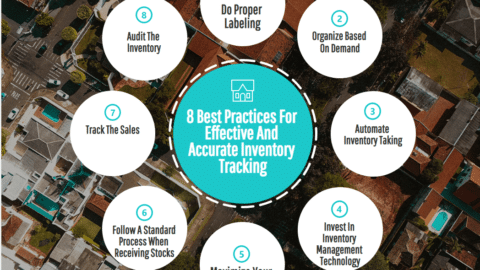The Human Touch in Data Annotation: Why It’s Needed in the Age of Automation
Today, the world is undergoing a transformation thanks to artificial intelligence. The majority of companies already use AI in their operations, and those that do not aim to do so. By 2025, it is anticipated that the worldwide market for AI solutions would reach $100 billion. Building and deploying AI-powered solutions in your business, however, is challenging due to labor-intensive, yet crucial tasks like data collecting and data annotation. Many annotators use automated data annotation tools to win time. However, automated data annotation is more prone to errors and bias. And it still has to be double-checked by Human-Annotated Data.
Table of Contents
Automation can have drawbacks despite its advantages. And it is why reliable machine learning models demand a human-in-the-loop approach. In this article, we’ll be taking a look at human factor as an important element in the data annotation process which can ensure high data quality for your AI-based projects.
The Limitations of Automated Annotation in AI
In the age of automation, the importance of data annotation is more critical than ever before. As the dependency on human intelligence continues to decrease, some worry that AI will become dominant and lead to job displacement.
However, the truth is that AI needs humans to function at its best. Automation cannot replace the human factor in data annotation. The human-in-the-loop approach is necessary for ensuring the quality and accuracy of annotated data. As it’s often more reliable than machine-annotated data. For the time being, fully automated labeling can be applied in extremely specific situations. While manual annotation is the most efficient method in the vast majority of cases.
For example, in the field of healthcare, machine learning algorithms diagnose diseases based on medical images. However, if the algorithm is trained on poor-quality labeled data, it may suggest incorrect diagnoses. By contrast, human annotation of subject-matter experts, ensures that data has correct labels. Hence, resulting in better predictions and diagnoses.
Therefore, the importance of data labelling can’t be overstated for AI to function reliably and effectively. Although automation is becoming increasingly prevalent, the human factor remains crucial in data annotation. Only through the human-in-the-loop approach, we can guarantee that AI continues to improve and make our lives easier.
What Are the Benefits of Human-Annotated Data?
As discussed above, human-annotated data plays an important role in the development of precise AI models. Compared to machine-annotated data, human annotators provide a number of pros, including:
- Ability to improve quality control. Human annotators can catch errors that machine algorithms may miss, leading to more exact and trustworthy data. In industries where human lives are at stake, such as healthcare or transportation, the human factor is indispensable and cannot be replaced by automated systems alone.
- Another benefit of human-annotated data is its flexibility and scalability. Unlike machine algorithms, human annotators can adapt to changes in data and quickly adjust their annotations as needed. This is necessary for fields such as natural language processing, where language is constantly evolving and changing.
- Human-annotated data can reduce bias in AI models. Machine algorithms are only as unbiased as the data they are trained on, and machine-annotated data may contain unintentional biases that can perpetuate discrimination and inequality. Human annotators, on the other hand, can identify and correct biases in the data, which will help the client get more fair and equitable AI models.
Overall, human annotation offers numerous advantages over automated annotation. While automated systems can be useful in certain contexts, the human factor is still essential for high-quality data annotation in AI.
The Missing Piece for Effective AI
The quality of the data used to train a machine learning model is crucial for its success. Involving humans in the data annotation process will bring significant benefits to the algorithm development process. Still in doubt? Let’s take a look at why the human-in-the-loop is so important to successful AI.
In real-world scenarios, the importance of data annotation and human collaboration has been demonstrated over and over again. For instance, the partnership between the augmented writing platform Textio and human annotators has enabled the company to offer more inclusive language predictions. By analyzing data sets with human judgement, the algorithm can now identify language that may be unintentionally exclusionary. Hence, helping to eliminate those biases in written communications.
Similarly, the partnership between machine learning company DataRobot and human annotators has led to the development of highly precise predictive models for tasks such as fraud detection and customer churn.
Above all, to enable the successful human-AI collaboration, it is important to work with a dedicated and secure data annotation service provider. One such provider is labelyourdata, which offers a wide range of data annotation services using a human-in-the-loop approach. By leveraging the expertise of human annotators, you can easily identify patterns in your data. And automated methods alone can miss those. And this is leading to more effective outcomes. This adds up to a semi-automated data labeling workflow that offers the potential to improve annotation quality while reducing human effort.

Concluding Thoughts on Data Annotation
As AI continues to expand, it is clear that the data annotation importance and human-in-the-loop concept are the inseparable part of creating accurate machine learning models. While the use of automated annotations may seem like a step forward in development processes, it is clear that relying solely on machines can lead to undesirable or even disastrous results.
In industries where correct data is critical, such as medical image analysis and aircraft engineering, it is even more vital to have human annotation in place. The human factor brings a level of intuition, reasoning, and decision-making that cannot belong to solely by machines.
The future of AI is exciting, but we have to remember that humans will continue to be a paramount part of it. As we move forward in the development of AI, we should make sure that our technology remains responsible and ethical.

Adhar Dhaval is experienced portfolio, program and project leader with demonstrated leadership in all phases of sales and service delivery of diverse technology solutions. He is a speaker sharing advice and industry perspective on emerging best practices in project leadership, program management, leadership and strategy. He is working for the Chair Leadership Co.










